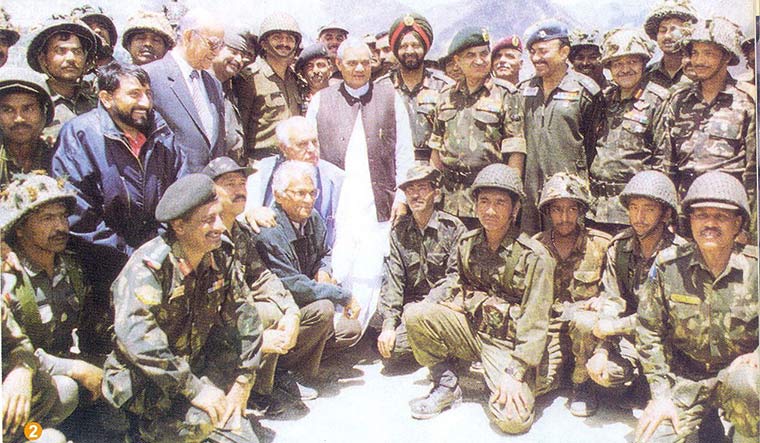Twenty-four years after the Kargil conflict, no Indian soldiers sit on the icy dominating heights, including at the 16,610 feet high (5,062m) Tiger Hills or the Tololing Ridge that overlook the vital National Highway number 1 (NH-1) connecting the Kashmir Valley to Ladakh.
The reason is simple. Pakistani soldiers and intruders who had stealthily taken positions at those heights in 1999 were hunted down and driven out about 9-10km away from the dominating heights to across the Line of Control (LoC).
General Pervez Musharraf’s ‘Operation Badr’ had aimed to occupy the dominating heights in Kargil. It would have severed road connectivity between the Kashmir Valley and Ladakh, thereby crippling supplies and troop movement to the sensitive Siachen glacier. Musharraf’s brilliant plan was to secure for Pakistan a higher bargaining position that would have forced India to yield concessions on Kashmir.
But that over 60-day-long war in May-July 1999 unleashed tremendous forces that changed the Indian military and continue to impact policies till date.
First, the ongoing process of change and historic reformation in the Indian military in the appointment of the Chief of Defence Staff (CDS), the ‘jointness, integration and threatisation’ effort as well as the need to have a younger profile for the Indian soldiers in form of the ‘Agnipath’ system had their seeds sown during the Kargil conflict.
Both the Kargil Review Committee report (2000) and the Group of Ministers Report (2001) had made these recommendations.
Second, the recent US fighter aircraft GE F414 aero-engine and the General Atomics MQ 9B ‘Reaper’ drone deals with India or even the agreement for semiconductor manufacture and sharing critical emerging technologies, have their genesis in a changed trajectory in the India-US bilateral ties. The seeds of this change lay in the Kargil conflict.
It warmed up US to India, ending a period of cold relationship after India conducted the nuclear tests in May 1998.
Kargil led to the beginning of US’s disengagement with Pakistan and the beginning of an engagement with India, thereby setting a new trajectory for India-US ties. It consequently led to India’s designation as a ‘strategic partner’ of the US and brought in the centrality of India in the US’s Indo-Pacific policy.
also read
- It's now clear Pakistan Army tortured Indian soldiers during Kargil war, says Captain Vikram Batra's father
- ‘Pakistan fighters may have intruded into Kargil in 1998 summer, a year before war began’
- 9km from LoC, Modi thunders: 'Pakistan hasn’t learnt from history'
- Pak has not learnt from history; Army will give befitting reply to patrons of terrorism: Modi
- Kargil Vijay Diwas: Modi in Dras to mark silver jubilee fete of war
To cold shoulder Pakistan when it was so vital for US’s operations in Taliban-ruled Afghanistan and later when US forces moved into Afghanistan post 9/11 or even to counter a rising China, would have required a big change in US policy. It is Kargil that contributed to that change.
Third, after the Indian military’s 'Operation Vijay' successfully countered Pakistan Army chief Musharraf’s 'Operation Badr', it demonstrated before the world, India’s expertise in high-altitude warfare in oxygen-depleted, freezing cold and extremely mountainous terrain.
The valour of Indian soldiers in beating back the intruders, shrugging off Pakistan’s ‘first-mover advantage’ under extremely difficult conditions, stood underlined.
Fourth, from then on, India’s intelligence network was sewn into the country’s military architecture. Intelligence, counter-terrorist operations and civil-military relations were special areas of focus in the Kargil Review Committee recommendations. This was perhaps one of the earlier instances of seeking a whole-of-the-nation effort.
Fifth, India was able to consolidate its hold on the strategic peaks and dominating heights along the border with Pakistan. Continuous border vigil and military consolidation became a key factor in the border management plan that has now stood the test of time.



